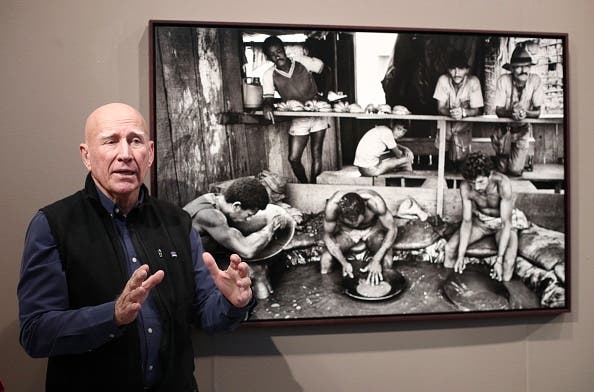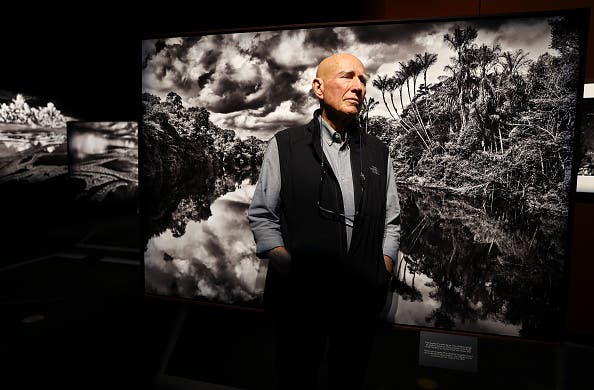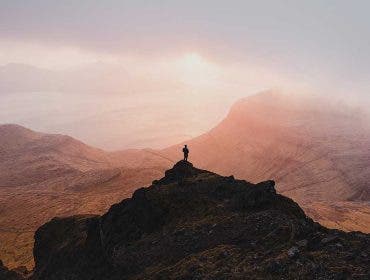I was in my late twenties, working as an editorial assistant at Photo District News. That’s when I had the extraordinary privilege of meeting Sebastião Salgado. Who was one of the most iconic and visionary photojournalists in the world. As a young editor and writer just starting out in the photo industry, I was beyond grateful for the opportunity to attend the grand opening of one of Salgado’s exhibitions at ICP in New York City. Being a bit reckless at that age, I marched right up to the podium area. I then shook the photographer’s hand as I said hello. I had to meet him, not just watch him from afar. Suffice it to say, I was deeply saddened by the news of his passing at age 81. News of his death was announced on Friday, May 23.
The Deep Empathy of Sebastião Salgado
Sebastião Salgado is known for his soul-stirring, black-and-white images, particularly of laborers and migrants in remote communities. Indeed, he didn’t just turn his camera on marginalized lives—he immersed himself in those communities, engaging deeply with the people and places he photographed. A combination of deep empathy, classical composition, and a cinematic sense of scale and drama can perhaps define his signature style.
What he really cared about was best said by the photographer himself. He said the following in an interview with Ken Lassiter of Photographer’s Forum. “What I want is the world to remember the people I photograph. What I want is to create a discussion about what is happening around the world and to provoke some debate with these pictures. Nothing more than this. I don’t want people to look at them and appreciate the light and the palette of tones. I want them to look inside and see what pictures represent and the kind of people I photograph.”
Sebastião Salgado: Bodies of Work
Some of Salgado’s most epic bodies of work include Workers, focusing on the manual labor of people across the globe, which he began photographing in 1980 and first published in 1993 Migrations. Photographed over seven years and documenting the mass displacement of people across 35 countries due to social, economic, environmental, and political issues. Genesis, begun in 2004, explored remote areas and untouched landscapes. Additionally, Amazonia, which helped raise awareness for the Amazon and its indigenous populations and their struggles. With each project, Salgado embarked on years of extensive travel and immersion in his subject matter, and what always stood out most, besides the high-contrast, monochromatic beauty of much of the work, is that he truly cared deeply about raising awareness and compassion every time.

Sebastião Salgado: a Witness
What I’ll remember most about Sebastião Salgado is that he never roamed the world as a tourist but rather moved through it as a witness. A witness to pain but also to beauty. A witness to labor, to exile, to endurance. He didn’t just photograph and move on. He deeply engaged with his subjects, built relationships with them, and became involved in their struggles. His images didn’t just invite you to look. They pulled you in. After decades of documenting suffering, he turned his lens toward something more fragile—hope. Genesis is his global journey through the Arctic, the Amazon, the Galápagos, Antarctica, and across Africa and South America. A love letter of sorts to the wild—of places still holding on and to the people whose lives worked in balance with them.
What do I remember most about Sebastião Salgado during my one encounter with him almost 40 years ago? That he walked into the room quietly, almost like he was trying not to take up too much space. His mere presence, though, carried weight. Not because he was famous but because he had seen things—witnessed things—that most of us hadn’t yet dared to imagine. It was an absolute honor just to shake his hand for a fleeting second, a moment in time that made an indelible mark on me. Rest in peace Sebastião. The world will never forget you, and neither will I.
Rest in Peace
Salgado’s family has publicly stated that he developed leukemia, which is reportedly what he died from. It was a complication of a type of malaria he contracted in Indonesia in 2010. The news of his death was announced by his environmental nonprofit, Instituto Terra (focused on environmental restoration and sustainable rural development in the Doce River Valley of Brazil), which he founded with his wife, Léila Deluiz Wanick Salgado, in 1998. In addition to his wife, Salgado is survived by his two sons, Juliano and Rodrigo, and two grandchildren.
Feature image:
LOS ANGELES, CALIFORNIA – OCTOBER 19: Brazilian documentary photographer Sebastião Salgado stands for a photo at a press preview of his exhibit Amazônia at the California Science Center on October 19, 2022 in Los Angeles, California. The 13,000 square-foot immersive exhibit, designed by his wife Lélia Wanick Salgado, features 200 large-scale photographs and video montages taken over seven years of the Amazon rainforest, remote Indigenous tribes, and the threat deforestation poses to their survival. Salgado says, ‘My wish, with all my heart, with all my energy, with all the passion I possess, is that in 50 years’ time this exhibition will not resemble a record of a lost world.’ The exhibit is making its North American debut on October 21st and is supported by the Annenberg Foundation. (Photo by Mario Tama/Getty Images)





